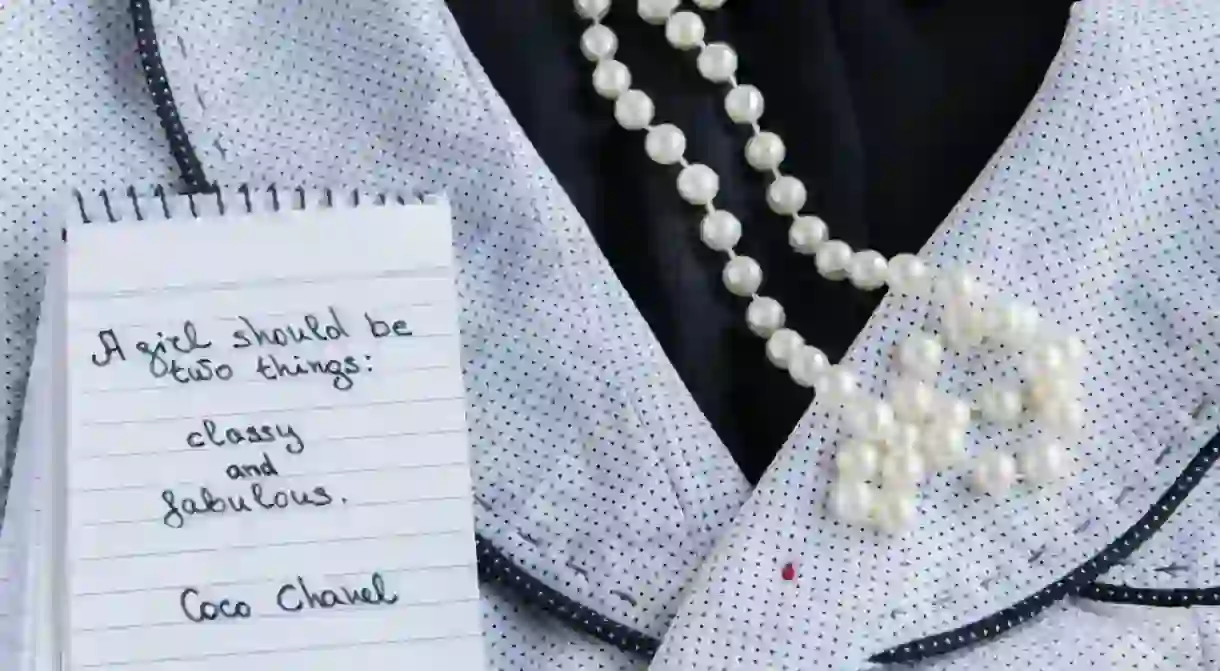Coco's Men: 8 Relationships That Shaped Chanel

Chanel, one of the most distinctive brands in fashion today, owes everything to the woman who gave it her name. Coco Chanel, tall, skinny, and impeccably dressed in her trademark suit, was as enigmatic as she was energetic. Her rise from rags to riches was fueled by her creative genius, while her personal life was characterized by her high-profile relationships and seductive power over influential men. This is the story of one woman and the eight relationships that have helped define our understanding of her.
Chanel And Her Father
Gabrielle Bonheur Chanel had a distinctly unglamorous start in life. Born in 1883 in the town of Saumur in the Loire Valley, she grew up poor in a one-room residence with her unstable parents and her four surviving siblings. When her mother died, Albert Chanel sent 12-year-old Gabrielle and her two sisters to a convent-run orphanage and hired out his sons as farm laborers. This story of childhood poverty and abandonment is one that would be creatively retold in her later life as one of the century’s most influential people. Despite their severity, the nuns taught the young Chanel the most valuable lesson of her life: the art of sewing.
Coco And Her Two First Loves
Starting out on her own, she worked as a seamstress while singing at a cabaret. It was here that she got the nickname Coco, either an allusion to her repertoire or a contraction of the French cocotte, meaning a kept woman. It was here, too, that she met the wealthy textile heir Étienne Balsan, who established Chanel as a milliner in Paris in 1910. Their affair ended when Chanel took up with one of Balsan’s friends, the even wealthier English aristocrat Arthur Edward ‘Boy’ Capel. He financed Chanel’s expansion into clothing and the creation of boutiques in Deauville in 1913 and in Biarritz in 1915. Shortly thereafter, Chanel was able to repay Capel all of his initial investment. She was successful because she was a woman designing for women: simple, practical forms and comfortable fabrics like jersey afforded wearers freedom unimaginable in the recent days of corsets. By 1919, she purchased the entire building at 31 rue Cambon, Paris, which to this day serves as the Chanel headquarters.
A Fashion Icon And Her Princes
Over the next two decades, Chanel enjoyed continued success. In 1921, she extended into accessories, jewelry, and fragrance. The following year, she created her signature Chanel No. 5. and in 1926 came the ‘little black dress’. During this period, she had high-profile liaisons with British royalty, including the controversial Duke of Westminster and the Prince of Wales, Edward VIII. However, at the outbreak of World War II, Chanel shut down all of her operations, putting 4,000 employees out of work. She continued to live in Paris throughout the Nazi occupation. Indeed, her relationship with Baron Hans Gunther von Dincklage, a German officer, significantly damaged her reputation.
Chanel Vs. Dior
In 1945, Chanel moved to Switzerland and watched as haute couture became a man’s game, starting with the success of Christian Dior’s New Look in 1947. This new aesthetic of cinched waists, padded bras, heavy skirts, and stiffened jackets was completely at odds with Chanel’s own. It was, in her opinion, a constricting male fantasy from which women would eventually have to unshackle themselves. In 1953, Chanel made her fashion comeback. Poorly received at first, she continued to rework her feminine, easy-fitting designs until they regained popularity.
A Legacy Left To Lagerfeld
On January 10, 1971, Chanel died in her sleep at her apartment at the Ritz Hotel, which to this day has been perfectly preserved. Her assistants continued her work until Karl Lagerfeld took over as creative director in 1983. Though the House of Chanel has evolved under his leadership, the muted color palette, quilt-stitched leather, gold chains, and the interlinked Cs of the logo remain the hallmarks of the brand, all of these conceived by the great woman who gave it her name.
Check out this tour to explore Coco Chanel’s Paris.













